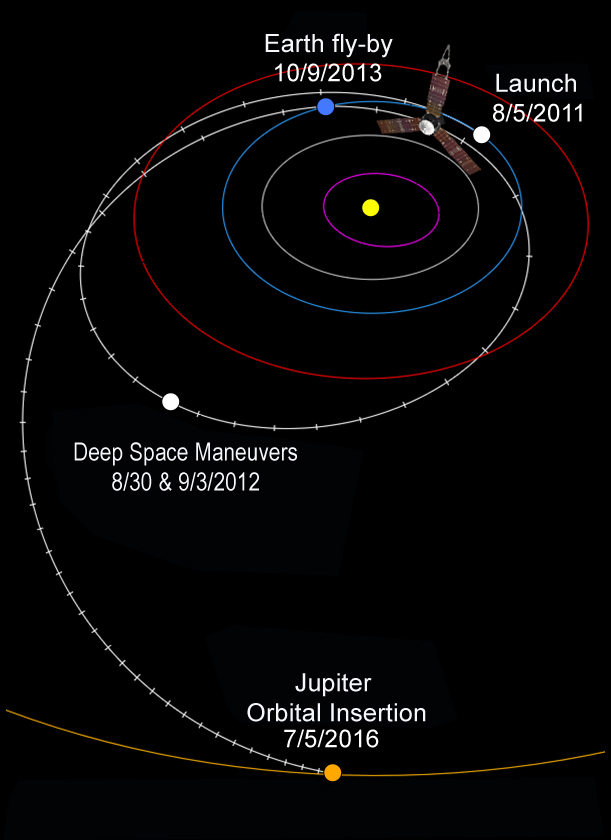Nasa Juno What will be achieved?
Nasa Juno probe Mission Objectives that are specified by using on board instruments by NASA on their websites is
Understand origin and evolution of Jupiter, look for solid planetary core, map magnetic field, measure water and ammonia in deep atmosphere, observe auroras.
Juno is the second spacecraft to orbit Jupiter, following the Galileo probe which orbited from 1995–2003. The Juno spacecraft is powered by solar arrays, commonly used by satellites orbiting Earth and working in the inner Solar System, whereas radioisotope thermoelectric generators are commonly used for missions to the outer Solar System and beyond. [wikipedia].
According to NASA Specifically, Juno will…
- Determine how much water is in Jupiter’s atmosphere, which helps determine which planet formation theory is correct (or if new theories are needed)
- Look deep into Jupiter’s atmosphere to measure composition, temperature, cloud motions and other properties.
- Map Jupiter’s magnetic and gravity fields, revealing the planet’s deep structure
- Explore and study Jupiter’s magnetosphere near the planet’s poles, especially the auroras – Jupiter’s northern and southern lights – providing new insights about how the planet’s enormous magnetic force field affects its atmosphere.
Juno’s principal goal is to understand the origin and evolution of Jupiter.
some more details are:-
- Determine the ratio of oxygen to hydrogen, effectively measuring the abundance of water in Jupiter, which will help distinguish among prevailing theories linking Jupiter’s formation to the Solar System.
- Obtain a better estimate of Jupiter’s core mass, which will also help distinguish among prevailing theories linking Jupiter’s formation to the Solar System.
- Precisely map Jupiter’s gravitational field to assess the distribution of mass in Jupiter’s interior, including properties of its structure and dynamics.
 By NASA/JPL – http://www.nasa.gov/mission_pages/juno/overview/index.html,
By NASA/JPL – http://www.nasa.gov/mission_pages/juno/overview/index.html,

Juno_launch By NASA – Screenshot from NASA TV, Public Domain.
- Precisely map Jupiter’s magnetic field to assess the origin and structure of the field and how deep in Jupiter the magnetic field is created. This experiment will also help scientists understand the fundamental physics of dynamo theory.
- Map the variation in atmospheric composition, temperature, structure, cloud opacity and dynamics to pressures far greater than 100 bars (10 MPa; 1450 pound/sq inch) at all latitudes.
- Characterize and explore the three-dimensional structure of Jupiter’s polar magnetosphere and its auroras.
- Measure the orbital frame-dragging, known also as Lense–Thirring precession caused by the angular momentum of Jupiter,and possibly a new test of general relativity effects connected with the Jovian rotation.

By Photo credit: NASA/Jack Pfaller – http://mediaarchive.ksc.nasa.gov/detail.cfm?mediaid=53133
ref:NASA
